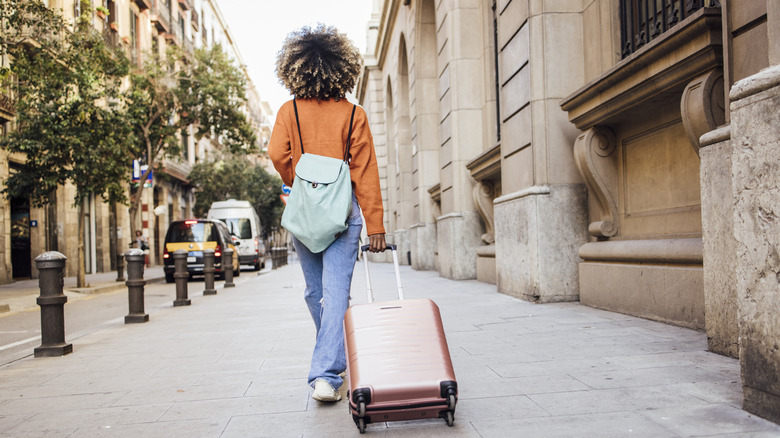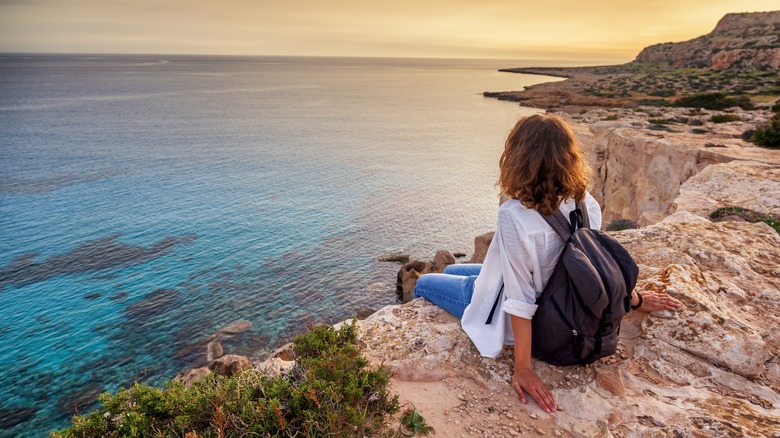This Is The Best Time To Go Backpacking In Europe
Let's face it; at one point, we've all dreamed of selling all of our stuff, buying a one-way ticket, and backpacking Europe. There's something romantic about leaving it all behind to explore the world. With many people having done so in their lifetimes, it's proven completely possible. If this is the year you're finally ready to take the leap and embark on a backpacking trip around Europe, one of the most crucial factors to consider is when you decide to go. Based on crowd size, prices, weather, and overall comfort, two seasons should be avoided, while two provide ideal backpacking conditions.
Summer might be the most popular time to visit the continent, but that's not necessarily good for backpackers. During the summer, Europe experiences overbooked lodgings, overcrowded streets, and sometimes, weather too hot to bear. Winter is magical because the continent generally takes the Yuletide season quite seriously, offering many cities with incredible Christmas markets you should visit. However, the weather tends to be quite chilly, and the days have minimal sunlight. Some northern nations even have daylight for less than three hours a day.
For the absolute best times to begin your backpacking journey in Europe, you'll want to visit during the spring or the fall. Both seasons have plenty of perks, so read on to see which one is better suited for you.
Where to go in the spring
Shoulder season is the time between the low season and peak high season. In Europe, that time falls in both spring and fall. If you want to begin your European backpacking journey in the spring, you'll need to choose from the 50 countries on the continent. Undoubtedly, the Netherlands is one of the best countries to visit in the spring. The flowers in the Netherlands are in full bloom in April and are quite a sight to behold. Italy is one of Europe's most popular nations for tourists, but in the spring, crowds are fewer, and though the weather isn't always prime, it's bearable with a light jacket.
Speaking of crowds, the Greek islands are another sought-after summer destination, but islands like Santorini and Crete are much more enjoyable in the spring. Hotels are often overbooked in July and August, meaning backpackers will likely get a better bang for their buck in the spring. For an underrated destination to start your backpacking trip in, head to Cyprus. Due to its geographical location, spring begins quite early, often as early as the end of February. This is a great place to give your backpacking trip a head start.
Where to go in the fall
Some destinations are better in the spring, and others are better in the fall. Before we dive in, there's one overlapping nation that is equally enjoyable in either season, and that's Greece. So much so that September and October are two of the best months to visit Santorini. Scandinavia is an excellent idea in the fall. While there's no guarantee of when you'll be lucky enough to catch a sighting of the northern lights, the visibility season begins in October. Sweden, Norway, Finland, and Iceland are some of the best countries in Europe to catch a glimpse of the aurora borealis.
If you want to get your fix on European beaches outside of high season, Portugal is the place to be. Even in October, temperatures still linger around the 70s (degrees Fahrenheit), and hostels in Algarve, one of the best beach towns in the country, are as low as $17 per night. No country does it better than Slovenia for some seriously stunning fall foliage. While you'll need to keep a close eye on tracking fall foliage as it varies year by year, mid-October is generally a good bet, especially near the Julian Alps.
In true backpacker fashion, head to Eastern Europe in the fall to visit some of the most budget-friendly destinations worldwide. Countries like Montenegro, Bulgaria, and Serbia already fly far under the radar, so outside of high season, these nations are even more enjoyable and affordable for backpackers.


